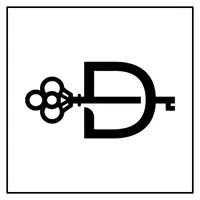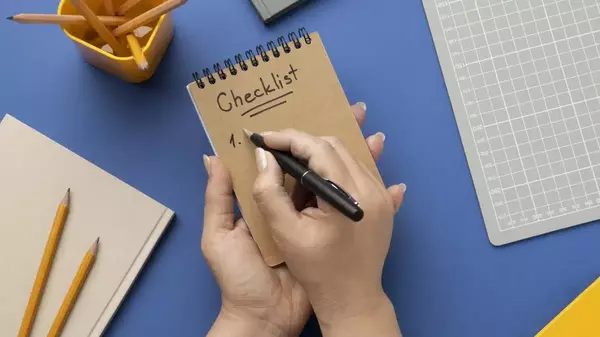Unlock Your Dream Home: The Ultimate Guide to Getting a Mortgage
Are you ready to buy your dream home but unsure where to start with the mortgage process? Don't worry; you're not alone! Getting a mortgage can seem like a daunting task, but with the right information and preparation, you can navigate the process smoothly and confidently. In this comprehensive guide, we'll walk you through everything you need to know to get a mortgage, from understanding your options to securing the best deal. Let’s dive in!
What Is a Mortgage?
Before we dive into the steps, let's clarify what a mortgage is. A mortgage is a type of loan specifically designed to help you buy a home. Unlike other loans, a mortgage is secured by the property itself, meaning if you fail to repay it, the lender has the right to take the home through a process called foreclosure.
Step-by-Step Guide to Getting a Mortgage
1. Assess Your Financial Situation
Before you even start looking at homes, it’s essential to get a clear picture of your financial situation. Here’s what you need to consider:
Credit Score: Your credit score plays a significant role in the mortgage process. A higher score can help you secure a lower interest rate, saving you thousands of dollars over the life of your loan. Aim for a credit score of at least 620, but the higher, the better.
Income and Employment: Lenders will want to know that you have a stable source of income. Generally, they prefer borrowers who have been employed in the same job or field for at least two years.
Debt-to-Income Ratio (DTI): Your DTI ratio is the percentage of your monthly income that goes toward debt payments. Most lenders prefer a DTI ratio of 43% or less.
2. Determine How Much You Can Afford
Once you understand your financial situation, it's time to figure out how much you can afford to spend on a home. A good rule of thumb is that your mortgage payment should not exceed 28% of your gross monthly income, and your total debt payments should not exceed 36%.
3. Save for a Down Payment
While some mortgage programs allow for low or no down payments, it’s still a good idea to save up. A larger down payment can help you secure a lower interest rate and reduce your monthly payments. Typically, lenders prefer a down payment of 20% to avoid Private Mortgage Insurance (PMI), but many loans are available with lower requirements.
4. Explore Mortgage Options
There are various types of mortgage loans available, each with its own set of benefits and requirements:
Conventional Loans: These are not insured by the federal government and typically require a higher credit score and a larger down payment.
FHA Loans: Insured by the Federal Housing Administration, these loans are ideal for first-time buyers or those with lower credit scores. They require a smaller down payment (as low as 3.5%).
VA Loans: Available to veterans, active-duty service members, and certain military spouses, these loans offer competitive interest rates and often require no down payment.
USDA Loans: These are designed for rural and suburban homebuyers and may offer zero-down financing for those who qualify.
5. Get Pre-Approved
Before you start house hunting, it's wise to get pre-approved for a mortgage. Pre-approval involves submitting financial information to a lender, who will then provide you with a pre-approval letter indicating how much they’re willing to lend you. This not only gives you a clear budget but also shows sellers that you're a serious buyer.
6. Shop Around for the Best Mortgage Rates
Don’t settle for the first offer you receive. Mortgage rates can vary significantly from one lender to another, so it’s crucial to shop around. Consider contacting several lenders, including banks, credit unions, and online mortgage lenders, to find the best rate and terms.
7. Gather Necessary Documentation
To apply for a mortgage, you'll need to provide various documents to prove your financial status. These typically include:
Recent pay stubs
W-2 forms from the past two years
Tax returns
Bank statements
A list of your assets and debts
8. Apply for the Mortgage
Once you've chosen a lender and have all your documents ready, it’s time to formally apply for the mortgage. The lender will review your application and may ask for additional information or clarification. During this process, it’s essential to stay in close communication with your lender to ensure everything moves smoothly.
9. Home Appraisal and Inspection
After your mortgage application is submitted, the lender will order a home appraisal to determine the property's value. This ensures the home is worth the amount you're paying. Additionally, you should arrange for a home inspection to identify any potential issues with the property before finalizing the purchase.
10. Closing the Deal
If everything checks out, you'll move on to closing, the final step in the mortgage process. During the closing meeting, you'll sign the necessary documents, pay any closing costs and down payments, and finally, receive the keys to your new home!
Tips for Securing the Best Mortgage Deal
Improve Your Credit Score: A higher credit score can help you secure a lower interest rate.
Save for a Larger Down Payment: The more you can put down, the less you’ll need to borrow, which can reduce your interest rate and monthly payments.
Lock in Your Interest Rate: Once you’ve found a rate you’re happy with, ask your lender to lock it in to avoid any increases before closing.
Avoid New Debt: Taking on new debt before closing can affect your credit score and DTI, potentially jeopardizing your mortgage approval.
Conclusion
Getting a mortgage may seem complex, but with the right preparation and knowledge, you can navigate the process with ease. By assessing your financial situation, understanding your mortgage options, and shopping around for the best rates, you'll be well on your way to unlocking the door to your dream home.
Ready to start your home-buying journey? I'm here to help!




